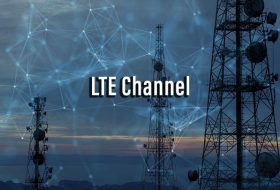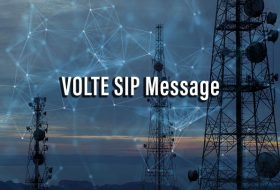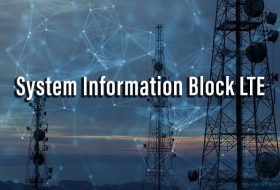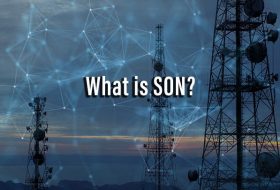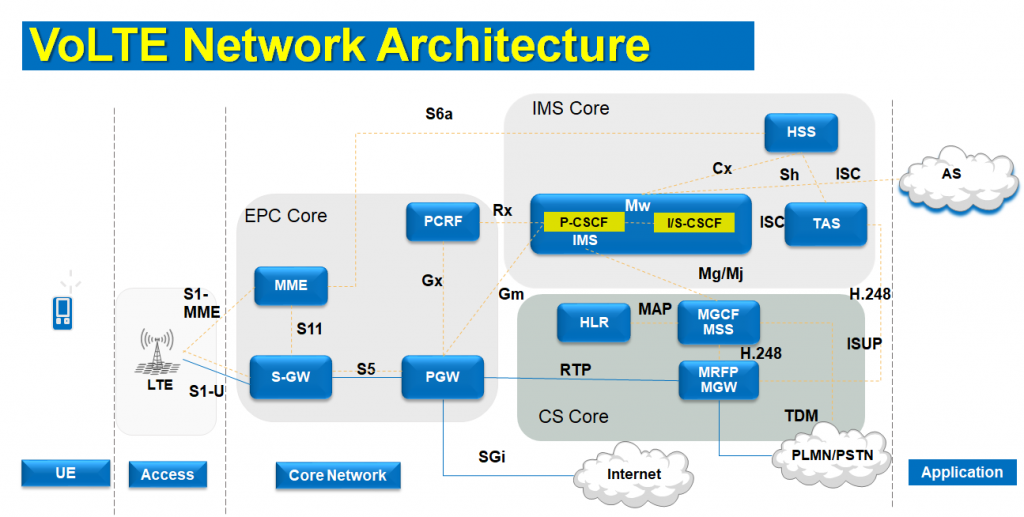 VOLTE ARCHITECTURE
VOLTE ARCHITECTURE
VOLTE: VOICE OVER LTE
VoIP call support over an LTE network requires IMS support. When a UE with an active VoIP call leaves LTE coverage to an area with only 1xRTT coverage, the call can be seamlessly handed over from the LTE-IMS to the 1xRTT CS domain. Call continuity from IMS to the CS domain is maintained with the help of Single Radio Voice Call Continuity (SRVCC) anchoring.
EUTRAN: Evolved UMTS Terrestrial Radio Access Network |
GERAN: GSM/EDGE Radio Access Network |
MME: Mobility Management Entity |
HSS:Home Subscriber Server |
SGSN: Serving GPRS Support Node |
UE: User Equipment |
UTRAN: Universal Terrestrial Radio Access Network |
PCRF:Policy and Charging Rule Function |
VoLTE and IMS :
- The IP Multimedia Subsystem (IMS) is an architectural framework for delivering Internet Protocol (IP) multimedia services.
- IMS uses protocols that enable sending voice, data, and video between communication devices of IP addressable data networks.
A minimum feature set of IMS is required to support VoIP over LTE
- Includes support for call waiting, conference calling, etc.
- Uses Session Initiation Protocol (SIP) for call setup
- AMR is the default codec
- Supports SMS over IP
VoLTE Architecture
The VoLTE logical architecture is based on the 3GPP defined architecture and principles for VoLTE UE, Long Term Evolution (LTE), Evolved Packet Core network (EPC), and the IMS Core Network.
It consists of the following functions:
-
VoLTE UE: The VoLTE UE contains functionality to access the LTE RAN and the EPC to allow mobile broadband connectivity. An embedded IMS stack and VoLTE IMS application are required to access VoLTE services.
-
Radio Access Network. The Evolved Universal Terrestrial Radio Access Network (E-UTRAN); this is often referred to as Long Term Evolution (LTE). LTE radio capabilities for FDD LTE only, TDD LTE only, or both FDD and TDD LTE are applicable for VoLTE.
-
Core Network. The Evolved Packet Core (EPC).
-
IMS Core Network. The IMS Core Network within the VoLTE architecture provides the service layer for providing Multimedia Telephony.
eNodeB Function:
- The EUTRAN consists of a single node, the eNodeB that interfaces with the UE.
- The eNodeB hosts the Physical (PHY), Medium Access Control (MAC), Radio Link Control (RLC), and Packet Data Convergence Protocol (PDCP) layers that include the functionality of user-plane header-compression and encryption.
- It also offers Radio Resource Control (RRC) functionality corresponding to the control plane.
- It performs many functions including radio resource management, admission control, scheduling, enforcement of negotiated UL QoS, cell information broadcast, ciphering/deciphering of user and control plane data, and compression/decompression of DL/UL user plane packet headers.
MME (Mobility Management Entity):
- The Mobility Management Entity (MME) is the key control-node for the LTE access network.
- It is responsible for idle mode UE tracking and paging procedures including retransmissions.
- It is involved in the bearer activation/deactivation process and is also responsible for choosing the SGW for the UE at the initial attach and at the time of intra-LTE handover involving Core Network node relocation.
- It is responsible for authenticating the user (in conjunction with the HSS).
- The NAS (Non-Access Stratum) signalling terminates at the MME which is also responsible for the generation and allocation of temporary identities to
the UEs. - The MME validates the permission of the UE to camp on the service provider’s PLMN and enforces UE roaming restrictions.
- The MME is the termination point in the network for ciphering/integrity protection for NAS signalling and handles security key management.
- Lawful interception of signalling is also a function provided by the MME.
- The MME provides the control plane function for mobility between LTE and 2G/3G access networks and interfaces with the home HSS for roaming UEs.
SGW (Serving Gateway):
- The SGW routes and forwards user data packets, while also acting as the mobility anchor for the user plane during inter-eNodeB handovers and as the anchor for mobility between LTE and other 3GPP technologies (terminating the S4 interface and relaying the traffic between 2G/3G systems and PGW).
- For idle state UEs, the SGW terminates the DL data path and triggers paging when the DL data arrives for the UE.
- It manages and stores UE contexts and performs replication of the user traffic in case of lawful interception.
- The SGW and PGW functions could be realized as a single network element.
PGW (Packet Data Network Gateway):
- The PGW provides connectivity between the UE and external packet data networks.
- It provides the entry and exit point of traffic for the UE.
- A UE may have simultaneous connectivity with more than one PGW for accessing multiple Packet Data Networks.
- The PGW performs policy enforcement, packet filtering for each user, charging support, lawful interception and packet screening.
- The SGW and PGW functions could be realized as a single network element.
HSS (Home Subscriber Server):
- The HSS is a network database that holds both static and dynamic data elements related to subscribers.
- The HSS provides user profile information to the MME and IMS core during UE attach and IMS registration.
PCRF (Policy Charging and Rules Function):
- The PCRF provides policy control decisions and flow-based charging controls.
- The PCRF determines how a service data flow shall be treated in the enforcement function (PGW in this case) and ensure that the user plane traffic mapping and treatment is in accordance with the user’s profile.
IMS :
- A default bearer is set up for IMS signaling streams when the UE attaches to the network.
- After the UE initiates a call, SIP signaling streams for call connection is transmitted over the default bearer through the P-GW to the IMS Core.
- A dedicated bearer for IMS voice media streams is set up during call connection.
- Voice media streams of the calling and called parties are transmitted over the dedicated bearer
IMS is the control infrastructure for supporting next-generation IP Multimedia Services and consists of many separate elements.
P-CSCF (Proxy Call Session Control Function):
- The P-CSCF is the initial point of contact for session signalling for the IMS-enabled VoLTE UE.
- The P-CSCF behaves as a SIP proxy by forwarding SIP messages between the UE and the IMS Core Network, maintains the security associations between itself and the VoLTE UE, and incorporates the Application Function aspect of PCC to enable binding of the IMS session with the bearer for applying dynamic policy and receiving notifications of bearer level events.
- The P-CSCF may be implemented in an Access Session Border Controller which may also incorporate the IMS-ALG/IMS-AGW.
I-CSCF (Interrogating Call Session Control Function):
- The I-CSCF is the contact point within an operator’s network for all connections destined to a user of that network.
- On IMS registration, it interrogates the HSS to determine which suitable S-CSCF to route the request for registration.
- For mobile terminating calls, it interrogates the HSS to determine which S-CSCF the user is registered on.
S-CSCF (Serving Call Session Control Function):
- The S-CSCF provides session set-up, session tear-down, session control and routing functions.
- It generates records for billing purposes for all sessions under its control, and invokes Application Servers based on IFCs received from the HSS.
- The S-CSCF acts as SIP registrar for VoLTE UEs that the HSS and I-CSCF assign to it.
- It queries the HSS for the applicable subscriber profiles and handles calls involving these end points once they have been registered.
Telephony Application Server (TAS):
- The TAS is an IMS Application Server providing support for a minimum set of mandatory MultiMedia Telephony (MMTel) services as defined by 3GPP e.g. supplementary service functionality, and profiled within GSMA PRD IR.92
MRF (Media Resource Function)
- The MRF is a common media resource function, for use by IMS Application Servers and I/SCSCFs, to provide media plane processing independent of application types,
IBCF/TrGW (Interconnection Border Control Function/Transition Gateway)
- The IBCF/TrGW is responsible for the control/media plane at the network interconnect point to other PMNs.
- The IBCF/TrGW may be implemented in an Interconnect Session Border Controller.
BGCF (Breakout Gateway Control Function
- The BGCF is responsible for determining the next hop for routing of SIP messages.
- This determination is based on information received within the SIP/SDP and routing configuration data (which can be internal configuration data or ENUM/DNS lookup).
- For CS Domain terminations, the BGCF determines the network in which CS domain breakout is to occur and selects the appropriate MGCF.
- For terminations in peer IMS networks, the BGCF selects the appropriate IBCF to handle the interconnect to the peer IMS domain.
- The BGCF may also provide directives to the MGCF/IBCF on which Interconnect or next network to select.
- Such directives may be given by the inclusion of a routeing header pointing to the next network ingress node.
Difference between CSFB and VoLTE UE call procedure :
CSFB UE ‐ LTE access selected :
- Detect available network
- Attach to the EPC and CS network over LTE
- Setup Internet APN and do some browsing
- Paging/call preparation between UE and MSC over LTE
- Place a call/receive a call
VoLTE UE ‐ LTE access selected:
- Detect available network
- Attach to the LTE network
- Setup IMS APN and find P‐CSCF(s)
- Register in IMS
- Place a call/receive a call (keeping current LTE access)
check other article



